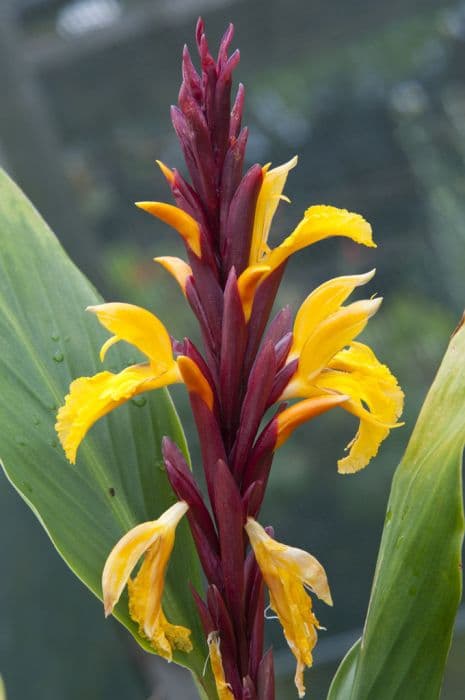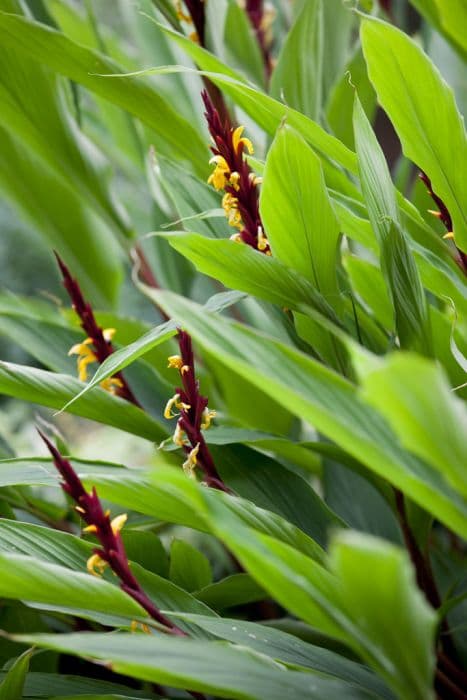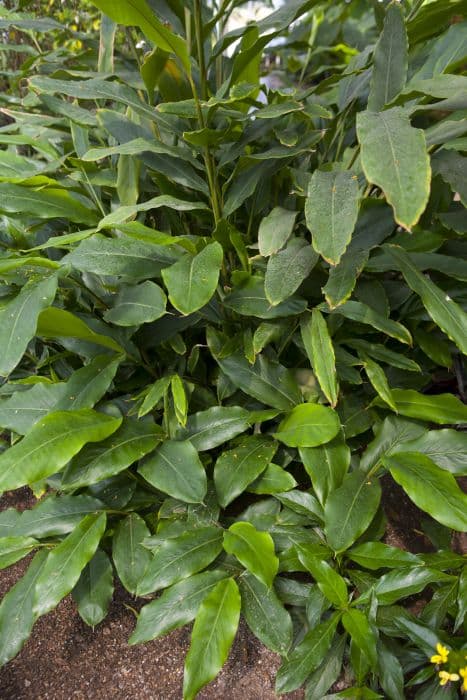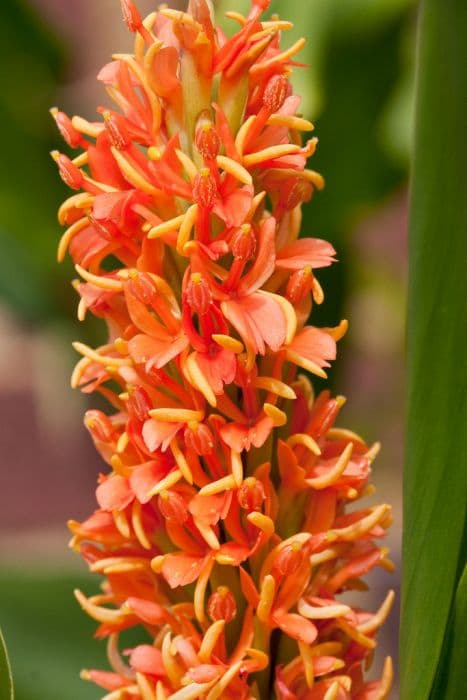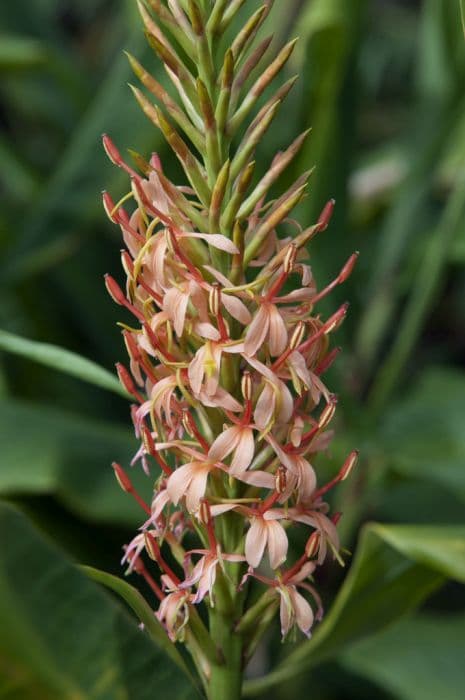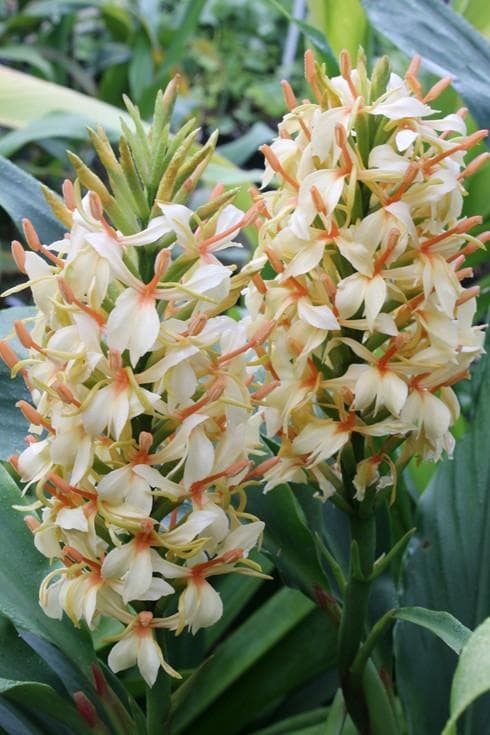Cautleya-flowered roscoea 'Helen Lamb' Roscoea cautleyoides 'Helen Lamb'

ABOUT
'Helen Lamb' is a perennial with mid-green, somewhat spreading leaves, clasping the stem. The lilac flowers are produced in small, terminal clusters from late spring to midsummer
About this plant
 Names
NamesFamily
Zingiberaceae.
Synonyms
Helen Lamb Ginger, Cautleya Spicata 'Helen Lamb'.
Common names
Roscoea cautleyoides 'Helen Lamb'.
 Characteristics
CharacteristicsLife cycle
Perennials
Foliage type
Deciduous
Color of leaves
Green
Flower color
Purple
Height
1-2 feet (30-60 cm)
Spread
0.5-1 feet (15-30 cm)
Plant type
Herb
Hardiness zones
6
Native area
Asia
Benefits
 General Benefits
General Benefits- Ornamental value: Adds a unique, tropical-like aesthetic to gardens with its attractive flowers and foliage.
- Attracts pollinators: Flowers provide nectar for bees and butterflies, supporting local ecosystems.
- Easy to care for: Requires minimal maintenance once established, making it suitable for gardeners of all skill levels.
- Drought tolerance: Once established, it has good resistance to drought, reducing the need for frequent watering.
- Cold hardy: Can survive in cooler climates, making it a versatile choice for various garden zones.
- Long blooming period: Offers an extended display of flowers through the summer months.
- Low pest and disease risk: Generally resistant to pests and diseases, which reduces the need for chemical treatments.
 Medical Properties
Medical PropertiesThis plant is not used for medical purposes.
 Air-purifying Qualities
Air-purifying QualitiesThis plant is not specifically known for air purifying qualities.
 Other Uses
Other Uses- Roscoea cautleyoides 'Helen Lamb', commonly known as ginger lily, can be used in floral arrangements for its unique and exotic flowers, providing a touch of elegance and a tropical look.
- The ginger lily's robust rhizomes can be used in crafting small-scale sculptures or stamps for art projects due to their firm, carve-able nature.
- The flowers of ginger lily can be pressed and included in botanical artwork or herbarium collections for educational or artistic purposes.
- Dried ginger lily flowers can make attractive potpourri when mixed with other flowers and spices, offering a visually appealing and fragrant decorative element for homes.
- Fresh ginger lily blooms are sometimes used as natural confetti at weddings or celebrations, especially in cultures where the plant is native.
- Ginger lily can be grown as part of a garden designed to attract pollinators like bees and butterflies, serving as an ecological niche for these insects.
- The long-lasting flowers of the ginger lily can be used in the study of flower longevity, providing useful data for horticulturalists and botanists.
- Fragrant varieties of ginger lily can be placed in outdoor sitting areas, where their scent can contribute to a calming and pleasant environment.
- The leaves of the ginger lily can be used in schools and educational programs to teach children about plant morphology and adaptation to shady environments.
- In cooler climates, ginger lily rhizomes can be harvested and stored over winter for replanting, serving as an educational example of plant propagation techniques.
Interesting Facts
 Feng Shui
Feng ShuiThe Roscoea is not used in Feng Shui practice.
 Zodiac Sign Compitability
Zodiac Sign CompitabilityThe Roscoea is not used in astrology practice.
 Plant Symbolism
Plant Symbolism- Rarity: The plant Roscoea cautleyoides 'Helen Lamb', commonly known as Hardier ginger, is not widely known, symbolizing uniqueness and the value of rare beauty.
- Adaptability: This hardy ginger shows resilience in various growing conditions, symbolizing adaptability and the ability to thrive in different environments.
- Exotic allure: Originating from the Himalayas, the hardier ginger often symbolizes the allure of exotic places and the mysteries held within them.
- Protective Qualities: In some cultures, gingers are considered to have protective qualities, making them a symbol of shelter and security.
- Delicate Strength: The Hardier ginger's delicate looking flowers contrast with its ability to survive in tough conditions, symbolizing a combination of beauty and strength.
 Water
WaterThe Roscoea Ginger, also known by its botanical name Roscoea cautleyoides 'Helen Lamb', should be watered regularly to maintain consistently moist soil, especially during its growing season in spring and summer. Provide water once or twice a week, depending on weather conditions, delivering approximately 1 to 2 gallons per week for each plant to ensure proper hydration. During the dormant period in winter, reduce watering frequency to prevent waterlogging, as this can cause root rot. Always check the top inch of the soil for dryness before watering to avoid over-saturation.
 Light
LightThe Roscoea Ginger thrives best in partial shade where it can receive filtered sunlight. It should be placed in a location that is protected from the harsh afternoon sun, which can scorch its leaves but should still receive enough morning or dappled light to promote healthy growth. Avoid deep shade as this can lead to poor flowering.
 Temperature
TemperatureThe ideal temperature range for the Roscoea Ginger is between 50°F and 70°F. It can tolerate a minimum temperature down to 32°F, but frost can be harmful, so provide frost protection if necessary. During the growth period, ensure the temperature remains consistent for optimal development.
 Pruning
PruningPrune the Roscoea Ginger to remove any faded or dead flowers to encourage new growth and to maintain a neat appearance. The best time for pruning is after the flowering season, typically in late summer or early fall. Pruning is not often necessary, but it can be done annually to remove any damaged or diseased foliage.
 Cleaning
CleaningAs needed
 Soil
SoilThe best soil mix for the 'Helen Lamb' Ginger Lily is a well-draining mix with high organic matter content such as a blend of loam, peat, and sharp sand. The soil pH should be slightly acidic to neutral, in the range of 6.5 to 7.2.
 Repotting
Repotting'Helen Lamb' Ginger Lily should be repotted every 2 to 3 years or when it outgrows its container, as this helps refresh the soil nutrients and provides room for growth.
 Humidity & Misting
Humidity & Misting'Helen Lamb' Ginger Lily thrives in moderate to high humidity levels, preferably around 60-70% for optimal growth. Avoid overly dry conditions.
 Suitable locations
Suitable locationsIndoor
Place in bright, indirect light with good humidity.
Outdoor
Plant in partial shade with moist, well-drained soil.
Hardiness zone
6-9 USDA
 Life cycle
Life cycleThe life cycle of Roscoea cautleyoides 'Helen Lamb', commonly known as ginger lily 'Helen Lamb', commences when the rhizomes (underground stems) break dormancy in spring, producing shoots that emerge above ground. The shoots then develop into sturdy stems with lance-shaped leaves, growing throughout the spring and early summer. In mid to late summer, the plant produces distinctive orchid-like flowers, which are usually a shade of purple or lilac, attracting various pollinators. Following pollination, seed capsules form and eventually dry, releasing seeds into the soil by late summer or fall. Over the winter months, the above-ground structure of the plant dies back to the ground while the rhizomes persist underground, entering a period of winter dormancy. The cycle begins anew in the next spring, with rhizomes once again sprouting new shoots.
 Propogation
PropogationPropogation time
Late summer
Propogation: The Roscoea cautleyoides 'Helen Lamb', commonly known as the orchid-like ginger, is typically propagated by division. The optimal time for this process is in the spring when the plant is just emerging from dormancy and you can see the new growth starting. To propagate by division, carefully lift the plant from the soil after the flowers have died down, and gently separate the rhizomes, ensuring each division has at least one growth bud. Replant the divisions immediately at the same soil depth they were originally growing, spacing them about 12 inches (approximately 30 centimeters) apart to give each new plant ample space to grow. Water the newly planted divisions well to help establish them. This method is favored for its simplicity and effectiveness, allowing gardeners to increase their stock of plants while ensuring the new plants are true to the parent's characteristics.
